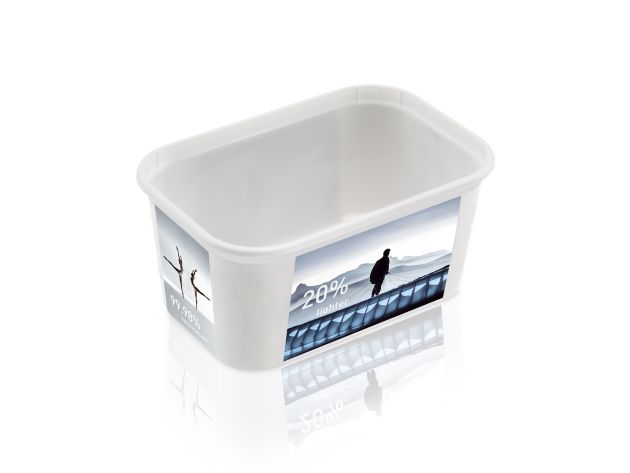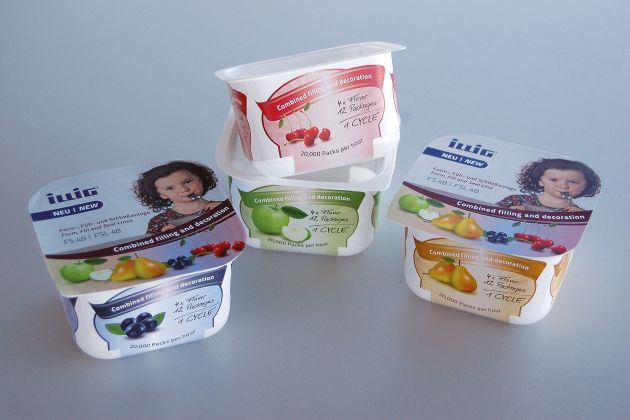Maximum product protection with the minimum input of materials, decorative design to stimulate purchase, and resource efficiency in production, storage and transport – these are the diverse requirements of the plastics packaging market.
At K 2016, to be held in Dusseldorf from October 19-26, exhibitors will showcase advances in technology to meet all of these requirements.
An overarching trend is sustained demand for lightweight plastics with high functionality.
In the area of lightweighting, a great deal of progress has been made in recent years, notably the omission of package outers, a switch to flexible from rigid or semi-rigid packages, new designs and the reduction in wall thicknesses.
According to a report issued by the organisers of K 2016, in the period from 1991 to 2013, packages became 25% lighter overall. In 2013 alone, one million tonnes of plastics was saved worldwide as a result of weight reduction, despite the growing expectations around functionality.
Taking PET bottles as an example, not only have the wall thicknesses been reduced, but the base design has also been optimised. New thread design alone saves 2g of plastic per bottle.
In film products, there is also a marked trend towards increasingly thin and functional solutions. Functionality can be achieved with suitable additives, although most commonly with multi-layering. The demand for more and more layers has thus culminated in so-called nano-layer arrangements of 33 layers and more. Today, 3- and 5-layer films are standard products, not least so that less expensive materials can be used for the middle layer.
Barrier films are usually composed of seven and more layers. This year at K 2016, Hosokawa Alpine AG in Augsburg is presenting an 11-layer film-blowing line for high-barrier films which also has an extra-compact design. Thanks to functional layers, multi-layer films usually have the advantage of being less thick than mono-products. While retaining its functionality, the film’s thickness can also be reduced by stretching.
Especially for this, Reifenhäuser Blown Film in Troisdorf will be showing the Evolution Ultra Stretch unit that is installed right on the blowing tower. Thanks to the stretch unit, compression bag films for nappies can be produced 50 rather than 70µm thick and silage stretch films with an unchanged range of properties 19 rather than 25µm thick – a thickness reduction of 30%.
Injection of efficiency
In the production of injection-moulded packaging materials, thickness reduction and savings of material are also big talking points as well as optimising cycle time and boosting efficiency. At this year’s K, Netstal Maschinen AG from Näfels in Switzerland is exhibiting a high-performanceinjection moulding machine with an electric welding unit that outputs over 43,000 round lids per hour with a weight of 7 g per item.
In-mould labelling (IML) has long been one of the well-known decoration methods for injection mouldings. Sumitomo (SHI) Demag Plastics Machinery GmbH in Schwaig is exhibiting its El-Exis SP 200 – probably the fastest machine for the production of decorated cups with a cycle time of less than two seconds.
A process for making injection-moulded packaging items even thinner and lighter is injection compression moulding (ICM), which is becoming increasingly established in the industry. This process differs from conventional injection moulding in that shrinkage is compensated for without injecting additional material in the holding-pressure phase. Instead, the ICM process makes use of a compression cycle, i.e. displacement within the mould. This makes savings of material of up to 20% possible. At the fair, Netstal will be demonstrating the production of a PP margarine package weighing just 10.7 g.
This in-mould-labelled cup, the production of which will be demonstrated live at K, weighs only 10.7 g thanks to injection compression moulding (image: Netstal).
For injection-moulded and deep-drawn packaging items, the ibt process to be presented by Cavonic GmbH is a way of applying a glass-like layer in the low-pressure plasma process and thus improving the shelf life of foods such as fruit spreads, baby food and dairy products in transparent mono trays.
With the appropriate machine equipment, deep-drawn IML trays can be more cost-effectively manufactured than injection-moulded ones. An exhibitor at K 2016, Illig Maschinenbau GmbH & Co. KG in Heilbronn builds thermoforming systems capable of producing lighter trays faster and thus generating production costs of EUR 43.80 for 1,000 units compared to EUR 51.60 for the same trays manufactured by IML injection moulding.
Deep-drawn IML trays have advantages over injection-moulded ones, as they can be produced faster and thinner and therefore more cheaply (image: Illig)
For more information on K 2016, visit www.k-online.com











